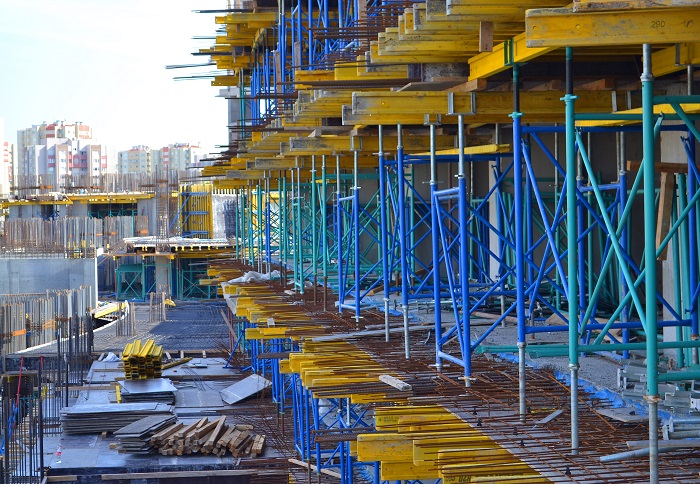Insulating a metal building isn’t just about staying warm in winter and cool in summer—it’s about energy efficiency, comfort, and even the longevity of your structure. Whether you’re converting a metal barn into a workshop or insulating a new metal warehouse, avoiding common mistakes can save you time, money, and headaches down the road. Let’s go through some of the most frequent blunders people make when insulating metal buildings and how you can steer clear of them.
Choosing the Wrong Insulation Material
One of the biggest mistakes you can make when insulating a metal building is choosing the wrong insulation material. It’s tempting to go for the cheapest option or simply what’s readily available, but this approach can lead to inefficiency and dissatisfaction. Metal buildings require insulation materials that can handle thermal expansion and contraction without losing effectiveness. Opt for insulation with a suitable R-value for your climate and ensure it’s designed for use in metal structures to maximize its performance over time. You can view quality metal building insulation products from BlueTex Insulation.
Neglecting Air Sealing
Air sealing is crucial in any insulation project, especially in metal buildings where seams and joints are more prone to air leakage. Even the best insulation won’t perform efficiently if there are gaps around doors, windows, roof penetrations, or between insulation panels. Take the time to properly seal these areas with caulk, foam, or other appropriate materials to prevent air infiltration. This not only enhances insulation effectiveness but also improves overall energy efficiency and comfort inside the building.
Incorrect Installation Techniques
Improper installation techniques can significantly compromise the effectiveness of your insulation. Whether you’re installing batt insulation, spray foam, or rigid foam boards, following manufacturer instructions and industry best practices is essential. Common mistakes include compressing insulation materials, leaving gaps or voids, and not securing insulation properly. Ensure insulation is fitted snugly but not excessively compressed to maintain its thermal resistance and longevity.
Ignoring Vapor Barriers
Vapor barriers play a crucial role in preventing moisture from entering the insulation and causing issues like mold, mildew, or reduced insulation efficiency. It’s a common mistake to omit vapor barriers altogether or to install them incorrectly. In metal buildings, where temperature differentials between indoor and outdoor environments can be significant, installing vapor barriers on the warm side of insulation is essential. This helps maintain optimal insulation performance and protects the building structure from moisture-related damage.
Overlooking Insulation Thickness and Coverage
Insufficient insulation thickness or uneven coverage can lead to energy loss and reduced thermal comfort inside your metal building. Before starting your insulation project, carefully calculate the recommended R-value for your climate and ensure that the insulation material you choose meets or exceeds this requirement. Pay attention to areas like corners, edges, and transitions where insulation coverage may be more challenging but equally important for achieving consistent thermal performance throughout the building.
What You Should Tell the Provider to Get Insulation Samples
Do you want to get free insulation samples ahead of a big project? This is advisable before choosing a new provider. You get to test out the materials and hold them in your hands before spending a lot of money.
In order to get the samples, you often have to ask some questions. This allows the company to tailor the samples to what you need. Here’s some of the information you might have to provide.
Your Personal Details
Let’s start out with the obvious information you need to provide for insulation samples. You need to tell the company who you are, as well as where you want the insulation samples sent to. Make sure you provide accurate details so that you receive them promptly. This can also include a telephone number or email address, which can confirm the samples have been sent. It’s possible the team could contact you after you receive them to ask about what you thought and general feedback.
About Your Project
It’s common for insulation providers to ask about the project you have. They want to understand what your primary goal is and whether their products will work for you. This is particularly true if they have more than one insulation product. They can use your information to send you the best samples and ensure their insulation can satisfy the type of building you have. Again, it’s important to be as accurate as possible with the information you provide. This means that you get the best products for your needs. So, answer all of the questions and even provide photos if there’s an option to do this.
Details on the Property
Often, a provider will ask you specific details about your property. These aren’t just invasive questions they’re asking. It’s to understand more about what products are going to work the best for you. So, don’t be afraid to answer questions about the property and share what you’re working on. This way you’re getting the products that are going to work the best.
Conclusion
In conclusion, avoiding these common insulation mistakes can help you achieve optimal energy efficiency, comfort, and durability in your metal building. By choosing the right insulation materials, ensuring proper installation, and considering future needs and environmental factors, you can create a well-insulated space that stands the test of time. Whether you’re insulating a small metal shed or a large industrial facility, investing time and effort into a thoughtful insulation strategy pays off in the long run. Remember, a well-insulated metal building isn’t just comfortable—it’s also more efficient and environmentally friendly.




